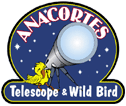Just for argument sake, does anyone think that there would be a point in upgrading a secondary on an 8 f/6 dob that gets used for planetary? What makes this complicated is that I'm not exactly sure of the figure of the primary, which is most likely an old discovery mirror that's been recoated by Spectrum. In my personal opinion, the scope already produces great planetary views. I'm pretty sure that I've got a 1/10 secondary in it. But if I could get say, a 1/20 or even a 1/30 secondary for 120-150 bucks or so, I may have a real planetary scope. Considering that the small secondary mirrors don't cost much, what do you all think?
1/10 secondary upgrade?
Started by ebrianschmidt, 11/14/2010 10:33PM
Posted 11/14/2010 10:33PM
Opening Post
Posted 11/14/2010 11:16PM
#1
Perhaps I am wrong and sager minds will chime in, but it seems that you get more bang for the buck by upgrading the secondary than refiguring the mirror. I did both. Also remember that much depends on seeing. So the improvement may not always be obvious without excellent seeing. Being from NW SC, we are not too far apart, so my suspicions are that your seeing is probably mediocre much of the time.
Jud
Jud
I Yam What I Yam!
Posted 11/15/2010 11:55AM
#2
I'd probably take a different approach, and first try to understand what is limiting the image quality in your scope. Get Dick Suiter's book on star testing, and try to evaluate the performance of the mirrors. Astigmatism is the most common problem with diagonal mirrors, and is very easy to evaluate with a "star test." It is possible to have a situation where errors in one mirror correct errors in the other, so replacing the diagonal may not always give an improvement.
Maybe thermal issues are present and $20 spent on fans would give a bigger improvement?
Be wary of mirror specs. Make sure you are comparing wavefront peak-to-valley numbers at the same wavelength (color). A 1/30 wave RMS surface mirror is much poorer than a 1/10 wave P-V wavefront mirror. Also make sure the mirror is individually tested over the entire surface -- sometimes mirrors are only sample tested (test only mirror from the batch of say 20) or only tested at the center (ignoring turned edges).
Maybe thermal issues are present and $20 spent on fans would give a bigger improvement?
Be wary of mirror specs. Make sure you are comparing wavefront peak-to-valley numbers at the same wavelength (color). A 1/30 wave RMS surface mirror is much poorer than a 1/10 wave P-V wavefront mirror. Also make sure the mirror is individually tested over the entire surface -- sometimes mirrors are only sample tested (test only mirror from the batch of say 20) or only tested at the center (ignoring turned edges).
Funding Member
Sponsors
- RemoteSkies.net
- ASTROPHOTOGRAPHY BY MARTIN PUGH
- SellTelescopes.com
- jp Astrocraft, LLC
- CarbonScopeTubes LLC
- GetLeadsFast, LLC
- OMI OPTICS USA LLC
- APM-Telescopes
- Anacortes Telescope
- AstroMart LLC
- T.E.C
- Rouz Astro
- Matsumoto Company
- ADM
- Astromart Customer Service
- FocusKnobs
- astronomy-shoppe
View all sponsors


